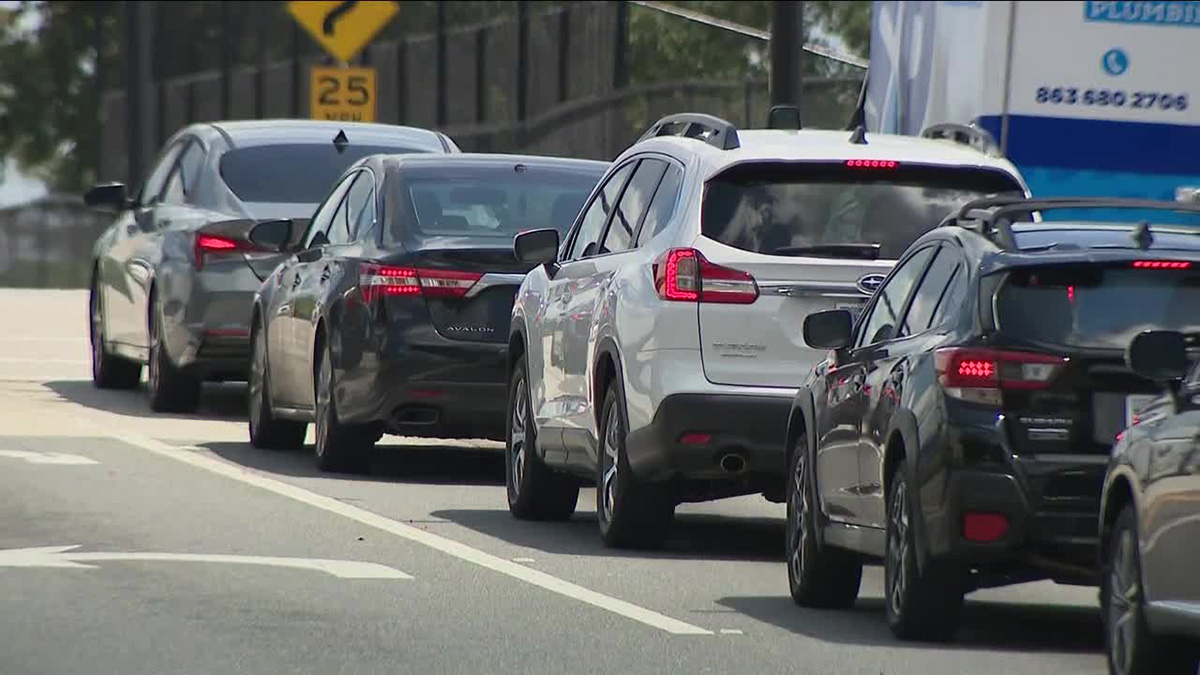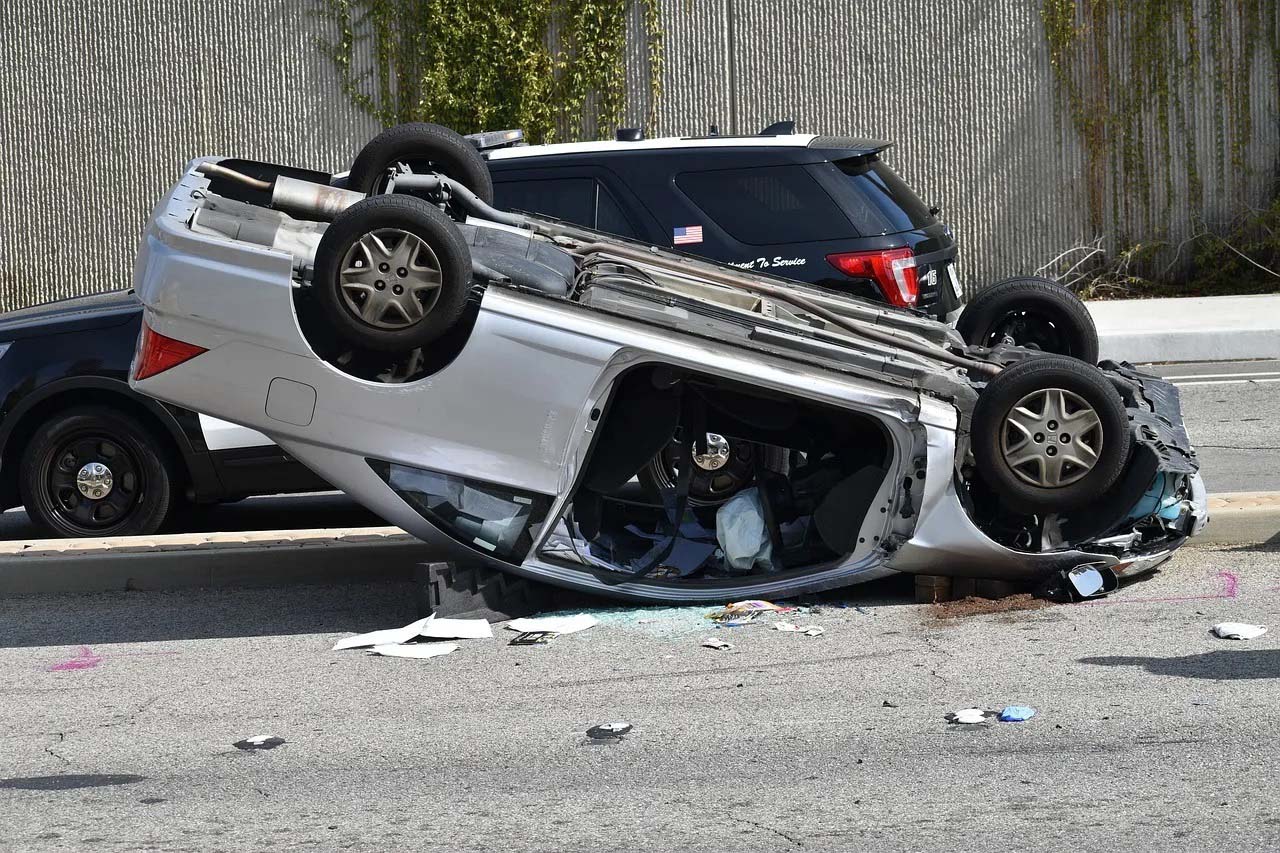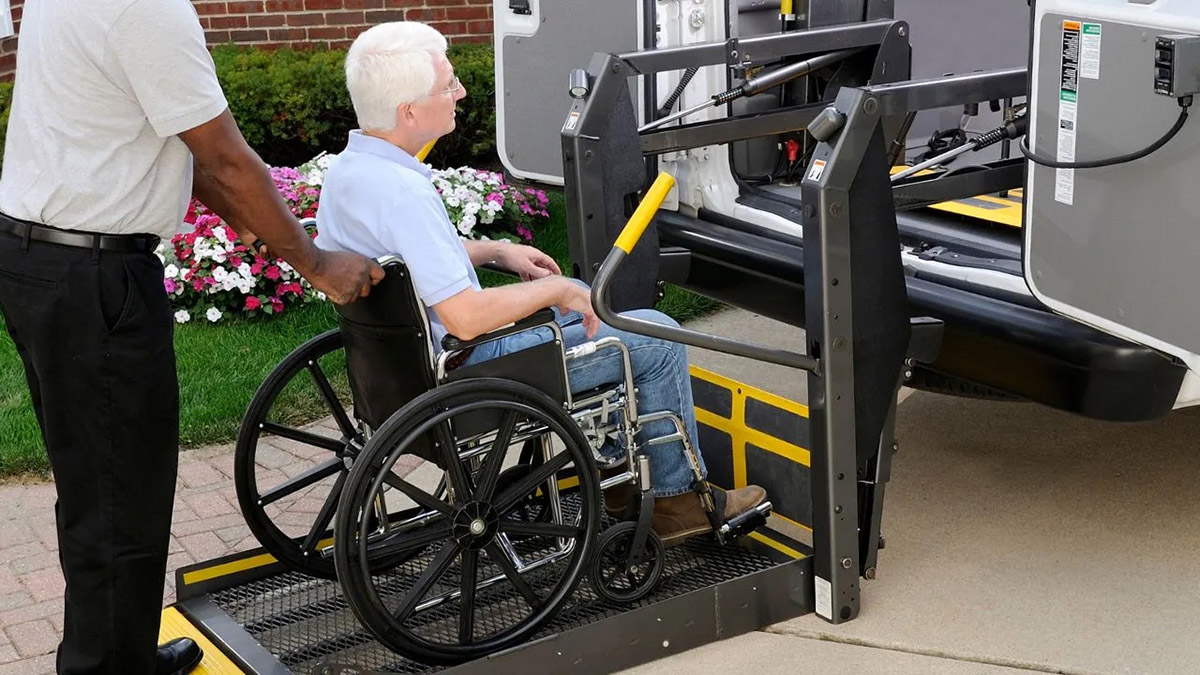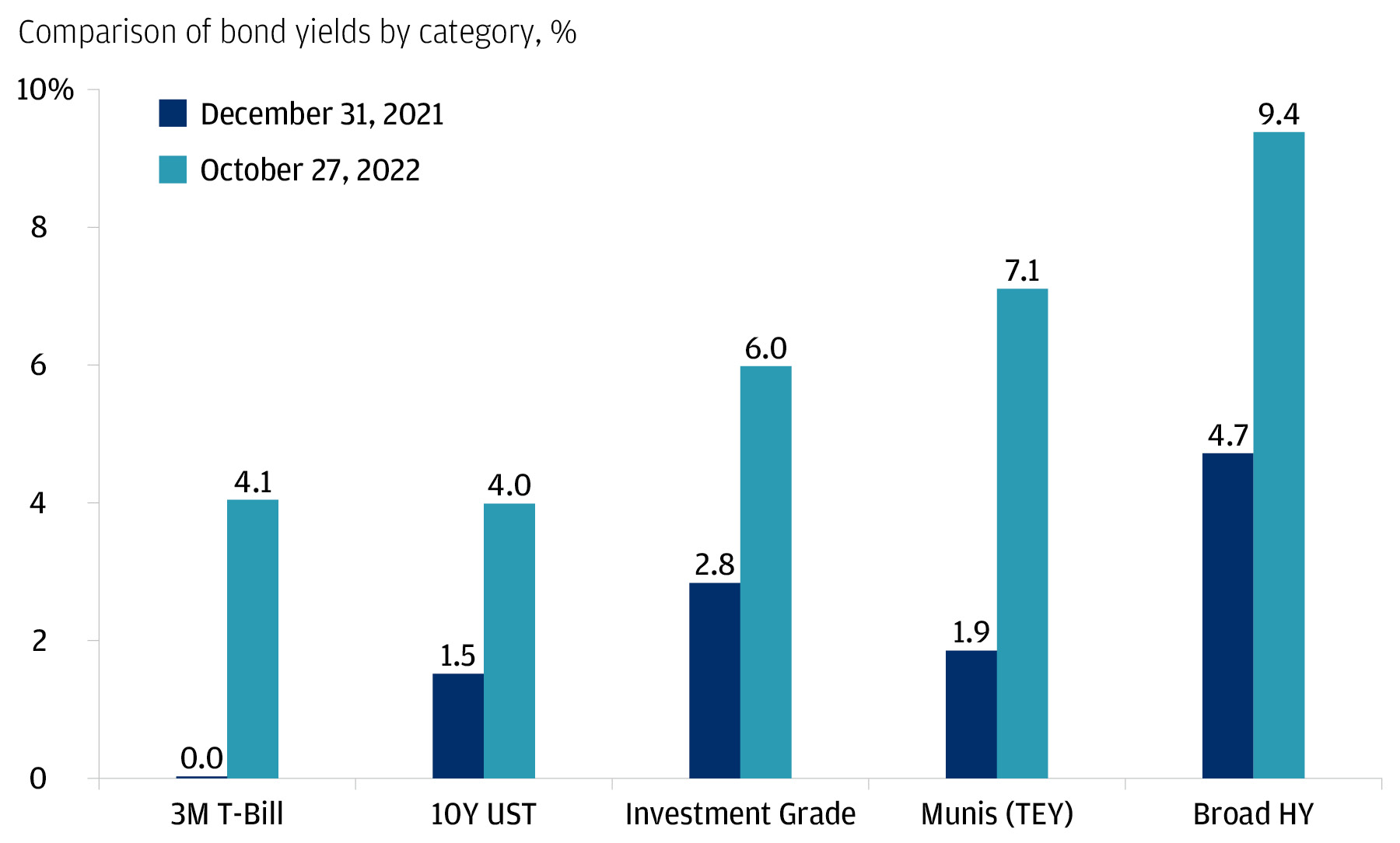

Finance
Why Is Auto Insurance So High In Michigan
Published: October 6, 2023
Discover why auto insurance rates in Michigan are so high and how it affects your finances. Explore ways to manage the cost and find affordable options.
(Many of the links in this article redirect to a specific reviewed product. Your purchase of these products through affiliate links helps to generate commission for LiveWell, at no extra cost. Learn more)
Table of Contents
- Introduction
- Unique Factors Driving Auto Insurance Rates in Michigan
- No-Fault Insurance System in Michigan
- Personal Injury Protection (PIP) Coverage
- Unlimited Lifetime Medical Benefits
- Rising Healthcare Costs
- High Incidence of Fraudulent Claims
- Collision and Comprehensive Coverage Costs
- High Percentage of Uninsured Drivers
- Michigan Catastrophic Claims Association (MCCA) Fee
- Michigan’s Unique Rating Factors
- Vehicle Theft Rates
- Population Density and Traffic Congestion
- Weather Conditions and Road Hazards
- Conclusion
Introduction
Welcome to the state of Michigan, where soaring auto insurance rates have become a hot topic of discussion. If you’ve ever lived or driven in Michigan, you’re likely familiar with the frustration of paying exorbitant premiums to keep your vehicle insured. But why is auto insurance so high in Michigan?
Michigan is known for its unique factors that contribute to the high cost of auto insurance. From its no-fault insurance system to the rising healthcare costs and high incidence of fraudulent claims, Michigan drivers find themselves burdened with some of the highest insurance rates in the country.
In this article, we will explore the various factors that drive up auto insurance rates in Michigan and shed light on the underlying reasons for the skyrocketing premiums. By understanding these factors, you’ll gain insight into the complex web of forces that make auto insurance in Michigan a financial challenge for many drivers.
So, buckle up and join us on this journey as we delve into the intricacies of why auto insurance rates are so high in the great state of Michigan.
Unique Factors Driving Auto Insurance Rates in Michigan
Michigan stands out among other states when it comes to auto insurance rates due to several unique factors. Let’s take a closer look at these factors and how they impact the cost of insurance.
No-Fault Insurance System in Michigan: One of the primary contributors to high auto insurance rates in Michigan is the state’s no-fault insurance system. Under this system, drivers are required to carry Personal Injury Protection (PIP) coverage, which provides medical benefits and wage loss protection regardless of who is at fault in an accident. While the intention behind the no-fault system is to streamline the compensation process and provide immediate support to accident victims, it also leads to higher insurance costs.
Unlimited Lifetime Medical Benefits: Michigan is the only state that offers unlimited lifetime medical benefits through PIP coverage. This means that regardless of the severity of an accident, individuals are entitled to receive medical treatment and rehabilitation for their injuries, with no financial cap. While this provides security for those injured in accidents, it also contributes significantly to the cost of insurance premiums.
Rising Healthcare Costs: Healthcare costs in Michigan, like in other parts of the country, have been steadily rising. With unlimited lifetime medical benefits offered through PIP coverage, auto insurers in Michigan bear the brunt of these skyrocketing healthcare expenses. This inevitably leads to higher premiums to cover the increasing medical costs associated with accidents.
High Incidence of Fraudulent Claims: Michigan has seen a significant rise in fraudulent claims, adding further strain to the insurance industry. Fraudulent claims can include staged accidents, exaggerated injuries, or even unnecessary medical treatments. These fraudulent activities drive up insurance costs as insurers must allocate resources to investigate and combat fraud, ultimately passing on these expenses to policyholders.
Collision and Comprehensive Coverage Costs: In addition to PIP coverage, collision and comprehensive coverage costs in Michigan also contribute to the high insurance rates. Factors such as repair costs, frequency of accidents, and vandalism rates impact the premium prices for these coverages, further burdening Michigan drivers.
High Percentage of Uninsured Drivers: Michigan has unfortunately been plagued by a high percentage of uninsured drivers. The presence of uninsured motorists increases the risk for insured drivers and can lead to increased insurance costs. Compensation for accidents involving uninsured drivers often falls on the insured party, resulting in higher premiums.
Michigan Catastrophic Claims Association (MCCA) Fee: The MCCA fee is an additional charge imposed on auto insurance policies in Michigan to fund the state’s catastrophic claims fund. This fee is designed to cover the costs of providing unlimited PIP coverage for individuals with severe injuries. The MCCA fee has risen significantly in recent years, contributing to the growing burden of auto insurance costs for Michigan drivers.
These unique factors paint a complex picture of the dynamics at play in Michigan’s auto insurance market. The combination of no-fault insurance, unlimited lifetime medical benefits, rising healthcare costs, fraudulent claims, high uninsured driver rates, and additional fees all contribute to the high auto insurance rates experienced by Michigan residents.
In the following sections, we will examine these factors in more detail to gain a deeper understanding of their impact on auto insurance rates in Michigan.
No-Fault Insurance System in Michigan
One of the major factors that contribute to the high auto insurance rates in Michigan is the state’s unique no-fault insurance system. Under this system, every driver is required to carry Personal Injury Protection (PIP) coverage as part of their auto insurance policy.
The purpose of the no-fault system is to provide prompt and efficient compensation to accident victims, regardless of who is at fault. It aims to streamline the claims process and ensure that medical benefits and wage loss protection are readily available to those injured in accidents.
While the no-fault system has its benefits, it also comes with certain drawbacks that contribute to the high cost of auto insurance in Michigan.
Firstly, the mandatory PIP coverage adds a significant cost to auto insurance policies. Michigan drivers are required to carry unlimited PIP coverage, meaning there is no cap on the medical benefits provided. This unlimited coverage is aimed at providing lifetime medical benefits to accident victims, ensuring they receive the necessary care and rehabilitation for their injuries. While this provides a sense of security and support, it also leads to higher insurance premiums to cover the potentially extensive medical costs.
Secondly, the no-fault system can lead to an increased number of claims. Since fault is not a determining factor in the compensation process, individuals may be more likely to file claims for injuries and damages sustained in accidents. This increased frequency of claims results in higher costs for insurance companies, leading to higher premiums for policyholders.
Additionally, the no-fault system in Michigan allows for a broader range of expenses to be covered under PIP benefits compared to other states. Medical expenses, rehabilitation services, wage loss benefits, and even household and nursing care may be covered under PIP coverage. The comprehensive coverage provided contributes to the overall cost of insurance, as insurers must account for these additional services in their premium calculations.
Furthermore, the no-fault insurance system in Michigan has faced challenges in recent years due to rising healthcare costs. Healthcare expenses, medical treatments, and rehabilitation services have steadily increased, and auto insurers in Michigan have to bear the brunt of these rising costs. As a result, insurance companies are forced to adjust their premiums to offset these expenses, further driving up the cost of auto insurance.
Overall, the no-fault insurance system in Michigan, while designed to provide immediate support and compensation to accident victims, contributes to the high auto insurance rates in the state. The unlimited PIP coverage, increased number of claims, comprehensive coverage provided, and rising healthcare costs all play a role in shaping the insurance landscape, making auto insurance more expensive for Michigan drivers.
Personal Injury Protection (PIP) Coverage
In Michigan, Personal Injury Protection (PIP) coverage is a mandatory component of auto insurance policies. PIP coverage is designed to provide medical benefits and wage loss protection to individuals involved in auto accidents, regardless of who is at fault.
One of the unique aspects of PIP coverage in Michigan is that it offers unlimited lifetime medical benefits. This means that accident victims are entitled to receive medical treatment, rehabilitation services, and other necessary care for their injuries, with no financial cap. This level of coverage ensures that individuals receive comprehensive and long-term support to aid in their recovery process.
While unlimited PIP coverage provides a sense of security and support to accident victims, it also contributes significantly to the high cost of auto insurance in Michigan. Insurance companies must account for the potential costs of extensive and ongoing medical treatments when calculating premiums. This results in higher insurance rates for Michigan drivers.
PIP coverage not only covers medical expenses but also provides wage loss benefits. If a person sustains injuries that prevent them from working, they may be eligible to receive a portion of their lost wages through PIP coverage. This feature of PIP coverage helps to minimize the financial impact that an accident may have on an individual’s livelihood.
Another unique feature of PIP coverage in Michigan is that it extends beyond just the driver of the insured vehicle. PIP benefits can also cover passengers in the insured vehicle, pedestrians involved in an accident with the insured vehicle, and individuals who are injured while occupying other vehicles, but not as drivers. This broad coverage ensures that individuals are protected regardless of their role in an accident.
It is important to note that PIP coverage is separate from liability coverage, which covers damages and injuries caused to other parties in an accident. PIP coverage is meant to provide immediate financial support for medical expenses and lost wages for the insured individual and their passengers.
The comprehensive nature of PIP coverage in Michigan, with its unlimited lifetime medical benefits and wage loss protection, is a key factor in the high cost of auto insurance in the state. While this level of coverage may offer peace of mind to accident victims, it does contribute to the overall premium expenses borne by Michigan drivers.
Unlimited Lifetime Medical Benefits
One of the factors that significantly impacts the cost of auto insurance in Michigan is the provision of unlimited lifetime medical benefits through Personal Injury Protection (PIP) coverage. Michigan is the only state in the country that offers such comprehensive and extensive medical benefits.
Under the unlimited lifetime medical benefits provision, individuals involved in auto accidents in Michigan are entitled to receive medical treatment and rehabilitation services for their injuries without any financial cap. This includes coverage for hospital stays, surgeries, doctor visits, physical therapy, and other necessary medical treatments related to the accident.
While the intention behind providing unlimited lifetime medical benefits is to ensure that accident victims have access to the care they need, it also comes with a significant cost. The cost of medical treatment, especially for severe injuries, can be substantial and without a cap on coverage, insurance companies bear the financial burden of potentially high medical expenses.
As a result, insurance companies in Michigan must account for the potential costs associated with unlimited lifetime medical benefits when determining premiums. The higher the potential medical expenses, the higher the premiums will be for policyholders to offset these costs.
Moreover, the availability of unlimited lifetime medical benefits can also contribute to increased utilization of healthcare services. When individuals know that their medical expenses related to an accident will be covered, they may be more likely to seek medical treatment and utilize a broader range of services. The increased utilization of healthcare services further drives up the cost of auto insurance in Michigan.
Another challenge that stems from unlimited lifetime medical benefits is the potential for fraudulent and excessive claims. While the majority of claimants genuinely require medical treatment, there are cases of fraudulent or exaggerated claims, leading to unnecessary medical expenses and inflated insurance costs. Insurance companies must allocate resources to investigate these claims, adding additional administrative expenses that ultimately impact premiums.
Unlimited lifetime medical benefits have their benefits in ensuring accident victims receive the necessary care and support. However, these benefits also contribute significantly to the high cost of auto insurance in Michigan. While it is essential to provide comprehensive coverage, finding a balance between coverage and affordability remains a challenge in the state.
Rising Healthcare Costs
Alongside the unique factors that contribute to high auto insurance rates in Michigan, the overall rise in healthcare costs has played a significant role in the increasing premiums. Michigan, like many other states, has experienced a steady increase in healthcare expenses, including medical treatments, hospital stays, and rehabilitation services.
Auto insurance companies in Michigan are directly impacted by these rising healthcare costs as they are responsible for covering medical expenses for individuals involved in accidents. This includes the medical treatments and rehabilitative care needed to recover from injuries sustained in an auto accident. As healthcare costs continue to escalate, insurers need to adjust their premiums to account for these rising expenses, ultimately impacting the overall cost of auto insurance.
The increasing costs of healthcare services are influenced by various factors, including advanced medical technologies, higher drug prices, and an aging population that requires more comprehensive care. These factors, combined with the complexity of treating injuries sustained in auto accidents, contribute to the overall rise in healthcare costs.
Furthermore, Michigan’s unique provision of unlimited lifetime medical benefits through Personal Injury Protection (PIP) coverage adds an additional layer of complexity to rising healthcare costs. While the intent behind offering unlimited coverage is to ensure accident victims receive the necessary care, it also means that insurance companies must cover potentially extensive and ongoing medical expenses.
The burden of rising healthcare costs is shared between insurance companies and policyholders, as insurers adjust premiums to reflect the increased financial strain caused by these escalating expenses. Michigan drivers must bear the brunt of these rising costs through higher auto insurance rates.
Efforts have been made to address the issue of rising healthcare costs in Michigan, including legislation and regulatory measures. However, finding a balance between providing comprehensive coverage and ensuring affordability remains a challenge.
It is important to note that the rising healthcare costs are not unique to Michigan and are a nationwide phenomenon. However, given Michigan’s unique factors, such as unlimited lifetime medical benefits and the no-fault insurance system, the impact of rising healthcare costs on auto insurance rates is particularly pronounced in the state.
In summary, the rising healthcare costs in Michigan have a significant impact on the cost of auto insurance. As medical expenses continue to rise, insurance companies must adjust premiums to offset these costs, making auto insurance more expensive for Michigan drivers. The challenge lies in finding a balance between providing necessary medical coverage and managing the financial burden on policyholders.
High Incidence of Fraudulent Claims
Michigan has unfortunately experienced a high incidence of fraudulent claims, which significantly contributes to the high cost of auto insurance in the state. Fraudulent claims occur when individuals intentionally make false or exaggerated claims for personal gain, often involving staged accidents, fictitious injuries, or unnecessary medical treatments.
The presence of fraudulent claims places a considerable financial burden on auto insurance companies. These companies must allocate resources to investigate and combat fraudulent activities, increasing administrative expenses and ultimately impacting the premiums paid by policyholders.
There are several reasons behind the high incidence of fraudulent claims in Michigan. One contributing factor is the state’s no-fault insurance system, which aims to provide swift compensation to accident victims, regardless of fault. While this system was designed to streamline the claims process, it has inadvertently created opportunities for individuals to exploit and manipulate the system for personal gain.
In addition, the provision of unlimited lifetime medical benefits through Personal Injury Protection (PIP) coverage in Michigan creates an environment that can be ripe for fraudulent activities. With no financial cap on medical benefits, individuals may be more inclined to exaggerate injuries or seek unnecessary medical treatments in order to exploit the system for financial gain.
Insurance fraud not only increases the financial burden for insurance companies but also affects innocent policyholders. The costs associated with investigating fraudulent claims and compensating for losses are passed on to all policyholders in the form of increased premiums.
Michigan has recognized the issue of fraudulent claims and has taken steps to combat this problem. The state has established dedicated anti-fraud units within insurance companies and law enforcement agencies to investigate and prosecute fraudulent activities. Stricter regulations and penalties for insurance fraud have also been implemented to deter individuals from engaging in fraudulent practices.
Education and public awareness campaigns have also been launched to inform policyholders about the consequences of insurance fraud and encourage reporting of suspicious activities. These efforts aim to reduce the incidence of fraudulent claims and create a more sustainable and equitable insurance environment for Michigan drivers.
However, the fight against fraudulent claims requires ongoing vigilance from both insurance companies and policyholders. By continuing to identify and combat fraudulent activities, Michigan can work towards reducing the financial strain caused by these practices and help to lower auto insurance premiums for all drivers.
Collision and Comprehensive Coverage Costs
When it comes to auto insurance rates in Michigan, the cost of collision and comprehensive coverage plays a significant role. Collision coverage provides compensation for damages to your vehicle resulting from an accident, while comprehensive coverage covers damages caused by incidents other than collisions, such as theft, vandalism, or natural disasters.
The cost of collision and comprehensive coverage is influenced by several factors specific to Michigan, contributing to the high insurance rates experienced by drivers in the state.
One factor is the high repair costs in Michigan. The cost of auto repairs depends on factors such as labor rates, parts cost, and the availability of specialized repair shops. Michigan, with its higher labor and parts costs, can result in more expensive repairs, ultimately driving up the cost of insurance premiums.
The frequency of accidents in Michigan also affects collision and comprehensive coverage costs. Higher accident rates lead to more claims, resulting in increased costs for insurance companies. The risk of accidents can be influenced by various factors, including population density, traffic congestion, and weather conditions – all of which are notable in Michigan.
Furthermore, the rate of vehicle theft in Michigan is another factor that impacts comprehensive coverage costs. The higher the rate of vehicle theft in a specific area, the greater the risk involved for insurers. Areas with higher theft rates are likely to have higher premiums for comprehensive coverage.
Michigan’s unique no-fault insurance system also has implications for collision and comprehensive coverage costs. With the no-fault system in place, drivers are required to rely on their own insurance to cover damages to their vehicles, regardless of fault. This results in increased claims frequency and subsequently higher premiums for collision and comprehensive coverage.
Although collision and comprehensive coverage costs in Michigan contribute to the overall high auto insurance rates, drivers do have the flexibility to choose their deductibles. By opting for higher deductibles, drivers can lower their premiums, although they will have to pay more out of pocket in the event of a claim.
It is important for Michigan drivers to evaluate their individual needs and assess the value of collision and comprehensive coverage. For older vehicles or those with lower market value, the cost of coverage may outweigh the potential benefits. Drivers should consider factors such as the age, condition, and value of their vehicles when deciding on the extent of coverage.
In summary, collision and comprehensive coverage costs in Michigan are influenced by factors such as high repair costs, the frequency of accidents, vehicle theft rates, and the state’s no-fault insurance system. Evaluating the necessity and value of these coverages can help drivers make informed decisions about their auto insurance policies.
High Percentage of Uninsured Drivers
One of the contributing factors to the high cost of auto insurance in Michigan is the prevalence of uninsured drivers on the roads. An uninsured driver is someone who does not carry the mandatory auto insurance coverage required by law. Unfortunately, Michigan has consistently had a high percentage of uninsured drivers compared to other states.
The presence of uninsured drivers poses a risk for insured drivers. In the event of an accident involving an uninsured driver, the insured driver may be left to bear the financial burden of damages and injuries. This often results in higher insurance premiums for Michigan drivers to compensate for the increased risk associated with uninsured motorists.
The costs associated with accidents involving uninsured drivers are typically passed on to insured drivers through their insurance premiums. Insurance companies factor in the increased likelihood of these incidents when determining rates for Michigan policies. The cost of uninsured motorist coverage, which provides compensation for damages caused by uninsured drivers, also contributes to higher premiums.
Several reasons contribute to the high percentage of uninsured drivers in Michigan. One factor is the economic challenges faced by some individuals, making it difficult for them to afford auto insurance premiums. Additionally, some individuals may choose to forgo insurance due to the high cost or a lack of understanding of the importance of carrying coverage.
The state of Michigan has taken steps to address the issue of uninsured drivers. The Michigan Secretary of State’s office routinely checks the insurance status of registered vehicles through an electronic system. Drivers are required to provide proof of insurance when renewing their vehicle registration, and penalties are imposed for failure to maintain the mandated coverage. However, enforcement and education efforts are ongoing to further reduce the number of uninsured drivers and mitigate the impact on insurance premiums.
It’s important for insured drivers in Michigan to protect themselves from the financial risks associated with uninsured drivers. Options such as uninsured motorist coverage can provide added peace of mind by offering compensation for damages caused by uninsured or underinsured drivers.
In summary, the high percentage of uninsured drivers in Michigan contributes to the overall cost of auto insurance. Insured drivers shoulder the financial burden of damages caused by uninsured motorists, leading to higher premiums. Ongoing efforts to reduce the number of uninsured drivers and promote awareness of the importance of insurance coverage aim to address this issue and create a fairer insurance landscape for Michigan drivers.
Michigan Catastrophic Claims Association (MCCA) Fee
Another significant factor contributing to the high cost of auto insurance in Michigan is the Michigan Catastrophic Claims Association (MCCA) fee. The MCCA is a nonprofit entity established by state law to provide coverage for catastrophic injuries resulting from auto accidents. Every insured vehicle in Michigan is subject to the MCCA fee, which is included in the auto insurance premiums.
The purpose of the MCCA is to ensure that individuals with severe injuries receive lifetime medical benefits beyond the limits of their Personal Injury Protection (PIP) coverage. This additional coverage is known as Catastrophic Claims coverage and offers unlimited lifetime medical benefits for individuals with qualifying injuries.
The MCCA fee is determined annually and is used to fund the catastrophic claims fund. The fee is calculated based on the estimated costs of providing lifetime medical benefits to those who qualify for Catastrophic Claims coverage. This includes the expenses associated with ongoing medical treatment, rehabilitation, long-term care, and other necessary services for individuals with severe injuries.
The MCCA fee has been a major contributing factor to the high cost of auto insurance in Michigan. Over the years, the fee has steadily increased to accommodate the rising costs of providing unlimited lifetime medical benefits. The fee is included in the premiums paid by Michigan drivers and is collected by insurance companies on behalf of the MCCA.
Michigan’s unique provision of unlimited lifetime medical benefits through PIP coverage, coupled with the responsibility of providing Catastrophic Claims coverage to individuals with severe injuries, places a financial burden on insurance companies. The MCCA fee helps to offset these costs and ensure the availability of necessary benefits for those who require long-term medical care.
The MCCA fee is an unavoidable component of auto insurance premiums in Michigan. Policyholders do not have the option to opt-out of paying the fee, as it is a mandated requirement. The fee contributes to the overall cost of insurance, making auto insurance rates in Michigan higher compared to other states.
Efforts have been made to address the rising MCCA fees and their impact on auto insurance rates. Legislative changes and reforms have been proposed to mitigate the increasing costs associated with the MCCA and provide relief to Michigan drivers. However, finding a sustainable solution that balances the need for comprehensive coverage with affordability remains a challenge.
In summary, the Michigan Catastrophic Claims Association (MCCA) fee is a significant factor contributing to the high cost of auto insurance in the state. The fee is used to fund the Catastrophic Claims coverage, which provides lifetime medical benefits to individuals with qualifying injuries. The increasing costs associated with providing unlimited lifetime medical benefits drive up the MCCA fee and ultimately impact auto insurance premiums for Michigan drivers.
Michigan’s Unique Rating Factors
When it comes to determining auto insurance rates in Michigan, several unique rating factors come into play. These factors, specific to the state, contribute to the overall cost of insurance premiums for Michigan drivers.
Vehicle Theft Rates: Michigan has experienced higher rates of vehicle theft compared to many other states. Areas with higher rates of vehicle theft pose a greater risk for insurance companies, leading to increased premiums to compensate for the potential losses incurred through theft claims.
Population Density and Traffic Congestion: Michigan, particularly in urban areas like Detroit, has high population density and traffic congestion. Increased population density and congested roadways can lead to a higher frequency of accidents, resulting in higher insurance rates for drivers in these areas.
Weather Conditions and Road Hazards: Michigan experiences a wide range of weather conditions throughout the year, including snowy winters and heavy rainstorms. Inclement weather can increase the risk of accidents and damage to vehicles. Also, road hazards such as potholes are prevalent, leading to potential damage to vehicles. These factors contribute to higher insurance rates in Michigan due to the increased likelihood of claims related to weather and road conditions.
Detroit’s Unique Rating Factors: The city of Detroit has its own set of unique rating factors that impact insurance rates. These factors include high crime rates, uninsured driver rates, and higher-than-average accident frequencies. Due to these factors, the city of Detroit often experiences higher insurance rates compared to other areas in Michigan.
Driving Record and Credit Score: In Michigan, like in many other states, a driver’s record and credit score are factors considered by insurance companies when determining rates. Drivers with a history of accidents or traffic violations may face higher premiums. Additionally, credit scores are sometimes used as a rating factor, impacting the cost of insurance for Michigan drivers.
Annual Mileage: The mileage driven by an individual in a year is also a factor that influences insurance rates in Michigan. Those who drive longer distances on a regular basis are deemed to have a higher exposure to accidents and may face higher premiums as a result.
These unique rating factors highlight the intricacies of the auto insurance industry in Michigan. The combination of vehicle theft rates, population density and traffic congestion, weather conditions, road hazards, Detroit’s specific factors, driving record and credit score, and annual mileage all contribute to the determination of insurance premiums for Michigan drivers.
It’s important for Michigan drivers to be aware of these unique rating factors and how they may impact their insurance rates. Understanding these factors can help individuals make informed decisions when shopping for auto insurance and potentially find ways to mitigate the impact of these factors on their premiums.
In summary, the unique rating factors in Michigan, such as vehicle theft rates, population density, weather conditions, and driving record, contribute to the overall cost of auto insurance in the state. By considering these factors, Michigan drivers can better understand the factors that influence their insurance rates and explore options to potentially lower their premiums.
Vehicle Theft Rates
One of the unique rating factors that significantly impacts auto insurance rates in Michigan is the prevalence of vehicle theft. Michigan has experienced higher vehicle theft rates compared to many other states in the U.S. This particular factor contributes to higher insurance premiums for Michigan drivers.
The risk of vehicle theft is an important consideration for insurance companies when determining rates. Areas with higher rates of vehicle theft pose a greater risk for insurers, as they must factor in the potential financial losses resulting from theft claims.
Higher vehicle theft rates in Michigan translate to higher insurance premiums for policyholders. Insurance companies calculate the risk of vehicle theft based on various factors, such as the make and model of the vehicle, the area where it is primarily parked, and the security measures taken by the owner.
Insurance premiums are adjusted based on the level of risk associated with the likelihood of vehicle theft. Higher vehicle theft rates lead to increased premiums, as insurance companies need to account for the potential costs of reimbursing the policyholder in the event of a stolen vehicle.
Moreover, certain areas within Michigan, such as urban centers and densely populated regions, tend to have higher vehicle theft rates compared to more rural areas. This is primarily due to factors like higher population density and urban crime rates.
There are steps that Michigan drivers can take to mitigate the risk of vehicle theft and potentially reduce their insurance premiums. Installing anti-theft devices, such as car alarms, steering wheel locks, and GPS tracking systems, can act as a deterrent and lower the chances of theft. Additionally, parking in well-lit areas or secure garages can provide added security for the vehicle.
Insurance companies often offer discounts to policyholders who take proactive measures to protect their vehicles from theft. By demonstrating a commitment to vehicle security, drivers may be eligible for lower insurance premiums.
Government and law enforcement agencies in Michigan also play a crucial role in combatting vehicle theft. Initiatives such as community education, public awareness campaigns, and strengthened law enforcement efforts help to reduce vehicle theft rates and create a safer environment for Michigan drivers.
While Michigan’s higher vehicle theft rates contribute to the overall cost of auto insurance in the state, it’s important for drivers to remain vigilant and take precautionary measures to protect their vehicles. By doing so, they can potentially lower the risk of theft and possibly secure more affordable insurance premiums.
In summary, the higher vehicle theft rates in Michigan impact auto insurance rates. Michigan drivers should be aware of the risk and take proactive steps to protect their vehicles. By implementing anti-theft measures and staying informed about local crime prevention efforts, drivers can reduce the risk of vehicle theft and potentially lower their insurance premiums.
Population Density and Traffic Congestion
Population density and traffic congestion are crucial factors that influence auto insurance rates in Michigan. The state’s urban areas, such as Detroit, experience high population density and traffic volumes, leading to increased risks for drivers and insurers.
High population density directly affects the frequency of accidents. As more vehicles occupy limited road space, the chances of collisions and fender-benders rise. The greater the number of accidents, the higher the insurance claims, resulting in increased premium costs for Michigan drivers.
Traffic congestion exacerbates the challenges posed by high population density. Congested roadways are characterized by stop-and-go traffic, increased driver frustration, and a higher likelihood of rear-end accidents. Additionally, traffic congestion can contribute to aggressive driving behaviors, increasing the risk of accidents.
Auto insurance companies take population density and traffic congestion into account when determining rates for Michigan drivers. Areas with higher population density and more traffic congestion pose a greater risk for accidents, thus warranting higher premiums as insurers anticipate more frequent claims.
Moreover, traffic congestion can also impact emergency response times. With congested roadways, emergency vehicles may experience delays in reaching accident scenes or providing immediate medical assistance. These delays can potentially worsen the severity of injuries and increase the overall cost of insurance claims.
Efforts to alleviate traffic congestion and enhance transportation infrastructure are continuously being explored in Michigan. These initiatives aim to improve traffic flow, reduce accident rates, and ultimately help to mitigate the impact on auto insurance rates for Michigan drivers.
Michigan drivers can also take preventative measures to navigate through congested areas safely. Staying attentive, maintaining a safe following distance, and obeying traffic laws can help reduce the risk of accidents. Additionally, opting for alternative transportation methods, such as carpooling or utilizing public transit when feasible, can help alleviate traffic congestion and reduce overall driving risks.
It’s important for Michigan drivers to understand the influence of population density and traffic congestion on auto insurance rates. While these factors may be beyond individual control, staying alert, practicing defensive driving techniques, and being cognizant of one’s surroundings can help mitigate the impact of these factors on insurance premiums.
In summary, population density and traffic congestion significantly influence auto insurance rates in Michigan. Higher population density leads to increased accident frequency, while traffic congestion exacerbates the risks associated with driving. As a result, insurance premiums are adjusted to accommodate the greater likelihood of accidents and claims. Understanding these factors can help Michigan drivers make informed decisions and take appropriate precautions on the road.
Weather Conditions and Road Hazards
Weather conditions and road hazards are significant factors that impact auto insurance rates in Michigan. The state is known for its diverse weather patterns, ranging from snowy winters to heavy rainstorms, which can affect driving conditions and increase the risk of accidents.
Inclement weather such as snow, ice, and heavy rain can create hazardous driving conditions, reducing visibility, causing slippery roads, and increasing the likelihood of accidents. These adverse weather conditions pose a higher risk for drivers and contribute to the increased frequency of claims.
Moreover, Michigan’s winters are known for heavy snowfall, which can lead to snow accumulation and the need for road salt and plowing. The presence of snowplows and the use of salt on road surfaces can sometimes result in damage to vehicles, such as paint chips or corrosion, thus generating additional claims and potential higher insurance rates.
In addition to weather conditions, road hazards like potholes and debris are also significant concerns for Michigan drivers. Harsh winters and frequent freeze-thaw cycles can cause road surfaces to deteriorate, creating potholes that pose risks to drivers. Hitting a pothole can result in damage to tires, wheels, suspension system, and other vehicle parts, leading to costly repairs and potential claims.
Auto insurance rates in Michigan take into account the higher risk of accidents and damage caused by adverse weather conditions and road hazards. Insurance companies factor in the frequency of accidents and claims associated with these factors when setting premium rates for policyholders.
Michigan drivers can take several precautions to navigate through challenging weather conditions and road hazards. This includes adjusting driving behaviors to account for reduced visibility or slippery roads, maintaining safe distances from other vehicles, and staying informed about road conditions and any advisories or warnings issued by local authorities.
Efforts are made to address road hazards in Michigan, particularly potholes. The state government and local municipalities allocate resources for road maintenance and repair, aiming to minimize the risks associated with poor road conditions. Prompt reporting of potholes and road hazards to the relevant authorities can contribute to improving road safety and mitigating the impact on insurance rates.
Michigan drivers should ensure they have proper auto insurance coverage that includes protection for weather-related damages and road hazards. Comprehensive coverage can provide financial assistance in the event of vehicle damage caused by weather conditions or road hazards, helping to mitigate personal expenses and potential premium increases.
In summary, weather conditions and road hazards are influential factors that impact auto insurance rates in Michigan. The state’s diverse weather patterns and road challenges contribute to increased risks for drivers, leading to higher accident frequencies and claims. By exercising caution, maintaining proper insurance coverage, and reporting road hazards, drivers can navigate through these challenges more safely and potentially minimize the impact on insurance rates.
Conclusion
Auto insurance rates in Michigan are notoriously high, and understanding the factors driving these costs is crucial for Michigan drivers. Several unique factors contribute to the elevated premiums experienced by residents of the state.
The no-fault insurance system, with its unlimited lifetime medical benefits and mandatory Personal Injury Protection (PIP) coverage, plays a significant role in driving up insurance rates. Rising healthcare costs, high incidence of fraudulent claims, and the cost of collision and comprehensive coverage also contribute to the increased premiums in Michigan.
Other factors specific to Michigan, such as the high percentage of uninsured drivers and the Michigan Catastrophic Claims Association (MCCA) fee, further impact auto insurance rates. Additionally, unique rating factors like vehicle theft rates, population density and traffic congestion, weather conditions, and road hazards contribute to the overall cost of insurance.
While the high auto insurance rates in Michigan can be frustrating for drivers, there are steps individuals can take to navigate these challenges. Understanding one’s insurance coverage, exploring available discounts, and maintaining a safe driving record are essential for managing insurance costs.
Efforts from state authorities, insurance companies, and drivers themselves are needed to address these challenges. Stricter enforcement against insurance fraud, improvements in road infrastructure, and efforts to reduce uninsured drivers can help alleviate the financial burden faced by Michigan drivers.
Ultimately, finding a balance between comprehensive coverage and affordability is critical to ensuring the protection and financial well-being of Michigan drivers. By staying informed, proactive, and vigilant, drivers can make informed decisions, practice safe driving habits, and work towards a more sustainable and affordable auto insurance system in the state.
In conclusion, the high auto insurance rates in Michigan are driven by a combination of unique factors, including the no-fault insurance system, rising healthcare costs, fraudulent claims, uninsured drivers, the MCCA fee, and various rating factors specific to the state. Understanding these factors and taking necessary precautions can empower Michigan drivers to navigate the challenges and strive for fairer and more affordable auto insurance rates in the future.














